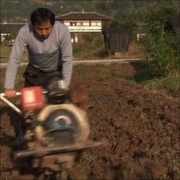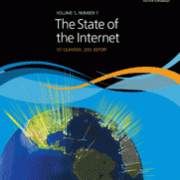Closing the Urban-Rural Digital Divide: Connectivity Success in Mongolia
A rich dynamic taking place within the telecom sector is the emerging of new, low-cost solutions more suitable for delivering cost-effective solutions to remote, low-density rural communities. Studies have shown that there is considerable untapped demand in rural areas. However, until just recently the cost of delivery relative potential revenues, has limited carriers from making the needed investments to service those living in these rural communities.
USAID’s Last Mile Initiative (LMI) undertook a number of projects to explore the potential for identifying and exploring potential solutions. One of these was the Mongolia LMI project. The project was launched in mid-2005 with an initial Assessment that explored opportunities, including holding discussions with the government and discussion private-sector firms interested in becoming involved. Discussions were also held with the World Bank who at the time was exploring an initiative to support for a universal service program and to undertake some limited rural demonstration deployments.
During this early phase the most promising approach that surfaced was to form a partnership between the Khan Bank who has approximately 300 rural banks throughout Mongolia, and Incomnet, a local ISP with a satellite network providing connectivity to a growing number soum-center branches of the rural Khan Banks. The preliminary focus was on leveraging this satellite investment by adding a community-wide extension through the deployment of community-WiFi networks, with voice services provided through a low cost Voice over Internet Protocol (VoIP) solution set. In many ways this VoIP approach served as a forerunner to the now-emerging lower-cost commercial solutions entering the marketplace.
In late November-early December of 2006, the USAID-funded team returned to Mongolia to design a workable network using Incomnet’s satellite network and to develop a detailed project plan. This design and project plan put forward an approach consisting of three key elements;
- the development of a detailed business-financial plan showing financial viability of rural access,
- the support of technical assistance for the deployment of wireless networks in four rural communities that would provide broadband and VoIP services off the back of Incomnet’s Dial@way satellite network, and
- a modest amount of risk capital required to install these four rural community networks.
The project was executed from mid-2006 through mid-2008, with full operations beginning in mid-2007.
The implementation took place in four rural communities: 1) the Saikhan soum of the Bulgan aimag, 2) the Tsengel soum of Bayan-Ulgii aimag, 3) the Chuluut bridge of the Ondor-Ulaan soum in the Arkhangai aimag, and 4) the Tsagaannuur bagh of theTariat soum in the Arkhangai aimag.
The implementation focused predominately on providing voice services via satellite-WiFi-VoIP, with PSTN interconnection. A final phase provided Internet access by placing a limited number of PCs within each of the four communities. For the initial installation an estimated 20-30 WiFi phones were distributed across the rural communities, with more to be added based on local demand.
The Mongolia LMI provided a valuable test-bed of experience, rich with lessons in several key areas for application well beyond Mongolia, including;
- Even those living in the most remote areas are capable and willing to pay for telephony services,
- The satellite-WiFi-VoIP solution sets is a viable, low-cost approach for delivering voice services into these remote areas, with the added advantage that the network can also deliver broadband Internet access,
- The revenue from these rural communities is sufficient to pay for the network, its operations, and interconnection cost, making these profitable business ventures even without universal service funds,
- Maintaining these systems in harsh conditions is a significant challenge requiring constant attention, and
- The technical & business-financial model is replicable to additional rural communities throughout Mongolia as well as other countries.
The Mongolia LMI project also positioned Incomnet, through the capacity building gained through execution of this project, to aggressively pursue subsequent roll-out of yet additional rural communities being funded in part through the World Bank and the newly established universal service fund.
In many ways the experiences in Mongolia pushed the envelop of both technology and a viable business-financial model, with the conclusion being that there are viable solutions for both. Fortunately there has been significant advancement in lower-cost technical solutions since this project was concluded, that provide even more stable and replicable rural solutions to meet the needs of rural Mongolia, as well as other remote rural communities.







































